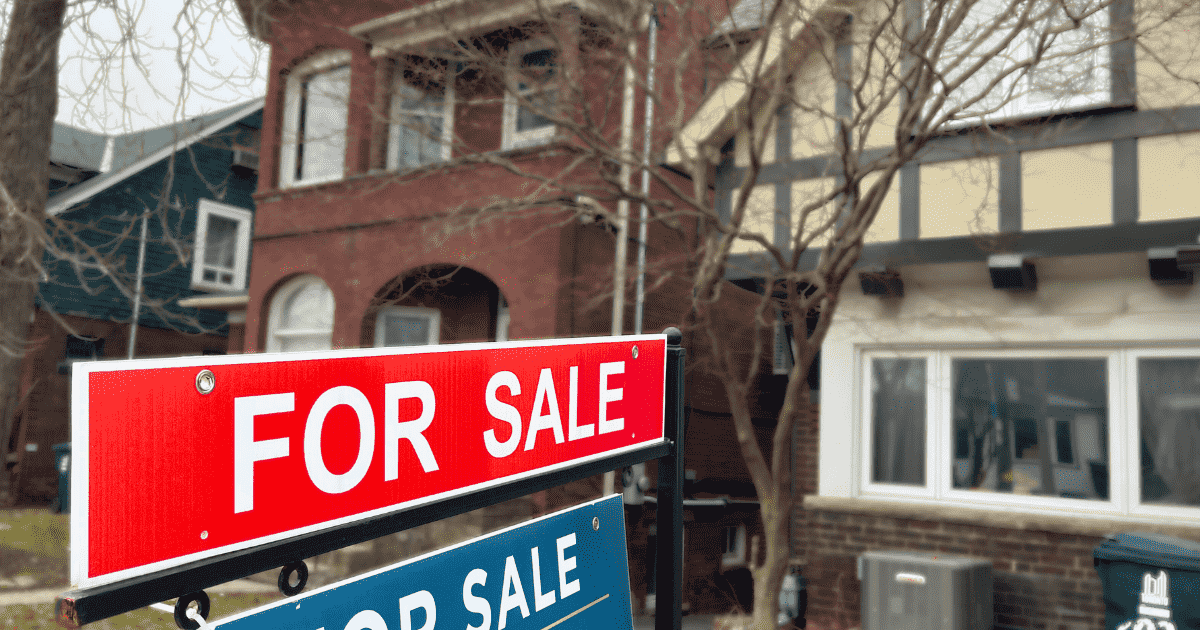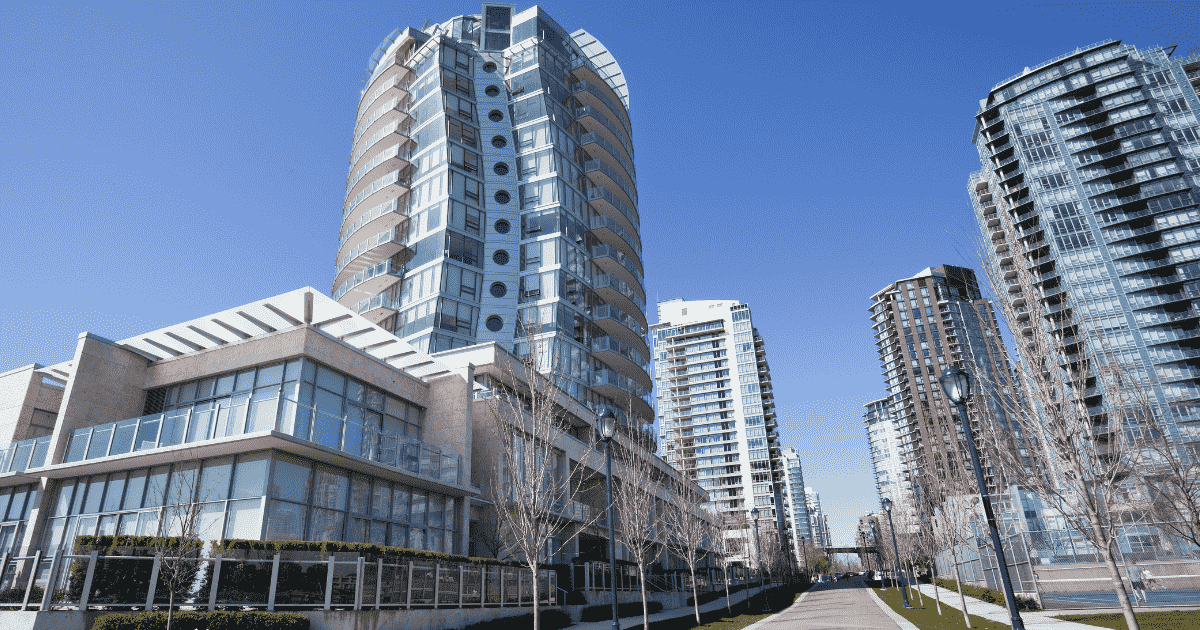Tight supply and overwhelming demand are fueling rising home prices in Canada’s most in-demand cities.
According to a recent report from Statistics Canada, Canada’s population grew by a record one million people in 2022, with almost all of the growth attributed to international migration.
With the federal government’s plan to welcome an additional 1.5 million immigrants by 2025, there is concern about how the increased demand will impact the country’s already-strained housing market.
Statistics Canada notes how the influx of newcomers “also represent additional challenges for some regions of the country related to housing, infrastructure and transportation…”
The issue of insufficient supply is frequently discussed in the industry, and many criticize governments’ lack of plans regarding housing.
What’s driving Canada’s growth?
There are several reasons for the immigration push, though, namely the need to fill ever-growing job vacancies and welcome refugees fleeing countries devastated by natural disasters and war.
The BC Real Estate Association’s Chief Economist, Brendon Ogmundson, explains, “We don’t have adequate supply because of the relentless level of demand from huge immigration and population growth, aside from the millennials who have been here.
“All of these people need to live somewhere, and without the supply, we get a lot of bidding on scarce assets, which pushes prices up.”
The role of supply
Tight spring markets are again leading to an increase in home prices in Canada’s most in-demand cities; the squeeze is being felt particularly acute in Toronto and Vancouver.
John Pasalis of Realosophy in Toronto points out, “When you have 20 or 30 people bidding on each property, it’s going to push prices up… At the end of the day, people still needed housing, so part of (pricing) is just the overwhelming demand for homes that help fuel price growth.”
The current supply situation
Pasalis notes, “We’re seeing the effect of this mismatch between housing demand and supply and rapidly rising home prices, but also rapidly rising rents.”
However, in 2022, according to Canada Mortgage and Housing Corporation, Toronto had the highest level of housing starts since 2012. The region concluded 2022 at 45,109 units, a 7.6 per cent jump year-over-year. But the GTA’s market continues to be characterized as tight, with March supply levels down 44.3 per cent compared to March 2022.
Vancouver is also grappling with low supply, with a 35 per cent decrease in new listings last month compared to March 2022 and about 22 per cent below the 10-year seasonal average. Ogmundson points out that even now, with sales still about 20 to 25 per cent below historical averages, the lack of supply is once again leading to an uptick in prices.
Vancouver, for example, had about 8,600 listings on MLS in March, more than 17 per cent below the 10-year seasonal average. Ogmundson explains, “15,000 to 16,000 listings is healthier.”
Despite limited inventory, in March, the Real Estate Board of Greater Vancouver reported the average for all residential properties was $1.14 million — a 9.5 per cent decrease over March 2022 and a 1.8 per cent increase compared to February 2023.
“It will only get worse, and at a time when (interest) rates are still at 20-year highs. Rates will come down, and we’ll have all that new immigration, and supply still can be low,” Ogmundson explains.
“My worry is that we’ll see prices rising again — 10 per cent plus just isn’t healthy for the market.”
Tom Davidoff, associate professor and director of the Centre for Urban Economics and Real Estate at the University of British Columbia, explains that despite continued construction completion, “There’s still a tremendous supply shortage in the sense that homes are beyond affordable for many, many households and that’s from lingering, lack of supply.”
What’s been done about this
Ogmundson shares that in the past, B.C.’s policy has been about reducing demand through its foreign buyer tax and the federal mortgage stress test. The economist believes that, essentially, the government is misdiagnosing the problem.
Millennials are the province’s largest demographic, and demand is intense from those starting a family, Ogmundson says.
“It’s hard to fight that with any type of policy,” he says. “The assumption over the past 10 years that it’s all foreign money, foreign capital for investment, is not the case. Demand is still really strong even with all that we’ve done on that side [to curb it].”
Vancouver real estate agent Steve Saretsky agrees, “Developers are building one and two-bedroom high-rises, which are great for investors and maximizing cash flow. But it’s not so great for young families who can’t afford single-family houses.
He adds, “There’s nothing in between, in that ‘missing middle,’ which is the biggest demand, townhouses, duplexes, and row homes. We need to be building a lot more of that product and a lot less of these glitzy high-rises.”
On top of this, Davidoff points out that the lack of affordable housing has long been an issue in Vancouver, citing that rental affordability is most pertinent because it often impacts lower-income households.
“I think we are certainly seeing policy responses, for better or worse. Making sure that what gets built is largely rental as opposed to owner-housing. There’s been a shift to upzoning, which is very healthy,” Davidoff commented.
“The Province of B.C. is taking steps to make sure municipalities take on their fair share of construction. That’s a very positive development.”
These steps involve the province’s Homes for People plan, which will see $4 billion invested over three years and $12 billion over 10 years to build thousands of new affordable homes.
Davidoff hopes B.C. will scrap single-family zoning. He feels there’s too much of it in the country, especially in Greater Toronto and Greater Vancouver.
“It’s nonsensical (single-family) would be public policy (but) provinces are making some steps in (the other) direction. Generally speaking, let the market build the housing it wants to build up to reasonable density limits.”
Some Canadian jurisdictions have lofty goals to fill the supply gap. For instance, Ontario plans to build 1.5 million new homes by 2031, which many are concerned is too aggressive due to a shortage of skilled workers— the construction industry may struggle to keep up.
The Ontario government says it will open up the greenbelt to address the mismatch of housing supply and demand, and the federal government created a housing accelerator fund to help boost supply.
In December— Toronto City Council approved a housing plan to transform zoning bylaws to tackle the affordability crisis. The proposal will allow multiplexes to be built in areas currently restricted to single-family homes, legalize rooming houses citywide, and aims to build 285,000 homes over the next 10 years.
But, like many others, Pasalis is skeptical. “In the past 10 (years), I think we built 650 (thousand homes). You cannot triple or double completions overnight— the construction sector is running at full capacity. What we’re actually seeing on the ground is our builders slowing down with new launches. Construction starts will actually trend down over the next year, not increase.”
How Canadian governments see things
Ogmundson has noticed less blaming of housing issues on speculators and foreign investors, despite the federal government introducing a foreign homebuyer ban— and announcing amendments not long after it was enacted. That’s been a shift from the same government and people who used to talk about demand and tried to minimize that side of the issue. Now, they also talk about fixing the supply side.
Ogmundson feels this is positive, even if it’s happening too late.
Davidoff has had some success in convincing people that upzoning and charging developers for it is the way forward, but politicians are reluctant.
“I think there’s too much belief that government should achieve affordability by telling people how much they can charge rather than letting the market forces decide,” he says. “Obviously, some people can’t afford market prices, and the way to deal with that is not to hold lotteries for deeply subsidized units, where some people get a unit, but almost everybody gets nothing.”
Saretsky pointed out governments are trying to get more subsidies for transit-oriented communities but tying government funds to permits issued isn’t being done at a scale that’s needed. “There’s a lot of discussion around that politically right now … but no real action,” he said.
What realtors are dealing with
The supply squeeze regularly creates some challenging situations for Canadian realtors and their clients, from higher prices and bidding wars to a lack of available housing altogether. But, they’re doing their best and holding out hope for a more amenable market.
For example, Pasalis points out that clients must walk away if they’re priced out of the market. “That’s what was happening way more in 2021 and 2022,” he says. “Right now, people who are in the market know what they can afford – prices aren’t increasing very rapidly. The challenge now is low supply, lots of buyers but not a lot of listings, making for a very competitive market.”
As well, Saretsky has found the process takes people much longer than they’d like it to.
“I think there are a lot of frustrated buyers out there and that’s why we’re seeing these multiple offers. People are stuck, throwing in the towel, and trying to find a house in the last six months [when] inventory hasn’t got any better. We thought it would, as it usually gets better in the spring, but it hasn’t, at least not yet,” he explains.
The way forward: What we can do now
It seems the best solution for the future is creating more affordable, dense housing with multi-unit zoning – which is certainly a big goal.
Ogmundson believes we need more housing, and we need it now. “We can either change neighbourhoods pretty dramatically with zoning and build more in what they call gentle density—row houses and the kind of thing you see in European cities—or we can keep things the way they are, and we’ll have status quo affordability, which no one is satisfied with.”
Davidoff hopes that single-family zoning will be abolished. “There’s way too much of it in the country, especially in Greater Toronto and Greater Vancouver. It’s nonsensical that would be public policy,” he says. “Let the market build the housing it wants to build up to reasonable density limits.”
He suggests building more and charging for the upzoning. “Freeze the zoning you get for free at current regulations. Then, charge for extra density. If you want to build more, you have to pay for the right. And selling those density rights can be extremely lucrative.
He adds, “Instead of building dedicated homes for low-income households with affordability mandates and forcing people who want to build condos to build rentals, just charge for the zoning … we’ll make the best use of it in mostly cash transfers to low-income households.”
Saretsky feels that more political discussion and coordination among all levels of government needs to happen.
“You’ve got the federal government saying, ‘Here’s our immigration target. You guys at the municipal level can figure it out.’ So, you let a million people into the country and have no plan, no coordination for infrastructure.”
He points out that at least some supply is better than nothing. But, Saretsky feels, “The problem is a lot of that supply is condos … raising families in a two-bedroom condo is not really what we’re used to. It’s not ideal, so we’ll continue to see a lot of demand for three-bedroom townhouses, row homes and duplexes. Hopefully, municipalities open it up and allow this to be built and more of it—I think that will certainly alleviate some of the price pressures.”
Industry professionals like Saretsky, Pasalis, Ogmundson, and Davidoff are calling for fresh ideas and action around addressing Canada’s housing supply issue.
While there is no single or simple answer to the shortage, and each jurisdiction’s needs will vary, the right solutions may lie in new and different zoning that allows for an increase of denser housing to accommodate Canada’s massive population growth now and in the future.
Plus, by having developers pay for upzoning, it fuels support for low-income rentals that are desperately needed.

Emma Caplan-Fisher is an editor and writer for REM. She has over a decade of experience in various content types and topics, including real estate, housing, business, tech, and home & design. Emma’s work has also been featured in Cottage Life, the Vancouver Real Estate Podcast, the Chicago Tribune, Narcity Media, Healthline, and others. She holds a Certificate in Editing from Simon Fraser University.
















Industry including high text should be encouraged to build in other provinces, if these jobs are available “they will come”
How many housing units in these strained cities are being used for air bnb’s?
Eliminate HST on the sales of new homes.
One problem is that all levels of government want to keep making money on development. Make it more appealing for builders to build. Like it or not they need to be profitable.
There’s a couple of ideas for you
The need for more housing is a pressing issue in many areas, but there is a shortage of skilled workers to build these homes. Traditional construction methods require a significant number of workers with specific skill sets, and there is a gap between talk and action when it comes to addressing this issue.
A diversified immigration program that includes countries and regions such as Turkey, Armenia, Africa, Taiwan, and the Philippines, among others, could be an effective way to address the shortage of skilled workers. Such a program should be implemented urgently(NOW) to prepare for the future and to ensure that the industry has the necessary workforce to meet the demand for new housing in 2024. It is important to note that immigration policies are complex and involve a range of considerations beyond simply addressing workforce shortages in the construction industry. Our training centers bring small #s of skilled workers, not enough. We need to rush implementing to bring carpenters, Steelman, cement finishers, bricklayers, etc…
Davidoff hopes that single-family zoning will be abolished???? What? I bet he lives in a single family home!
If we don’t have enough housing why are we immigrating One million ++ a year?